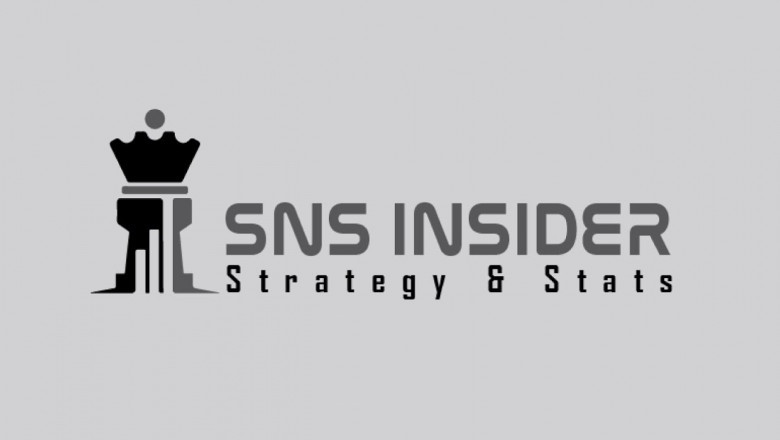views
According to the latest industry research, the global food allergy treatment market was valued at USD 6.51 billion in 2024 and is poised to more than double, reaching USD 12.57 billion by 2032, growing at a CAGR of 8.62% during the forecast period from 2025 to 2032.
The growth of this market is propelled by a significant uptick in food allergy cases worldwide, especially among children, and by increased awareness and diagnostic rates. Advances in immunotherapy, such as oral immunotherapy (OIT) and epicutaneous immunotherapy (EPIT), along with wider accessibility of epinephrine auto-injectors, are transforming the food allergy treatment landscape.
Get Ahead of Market Shifts: Request Your Sample Report! https://www.snsinsider.com/sample-request/7288
Market Dynamics: Drivers and Trends
- Increasing Incidence of Food Allergies
With rising exposure to allergenic foods and lifestyle changes, the prevalence of food allergies has surged globally. Children are most affected, leading to increased demand for preventive and therapeutic interventions.
- Improved Access to Immunotherapy
The acceptance and approval of novel therapies such as PALFORZIA (for peanut allergy) and investigational treatments like VIASKIN Peanut have revolutionized long-term allergy management.
- Regulatory Support and R&D Investment
Regulatory frameworks supporting clinical trials, along with increasing investments by key players in R&D, have boosted innovation. Companies are pursuing advanced biologics and desensitization therapies to cater to unmet medical needs.
- Growing Awareness and Education Campaigns
Awareness campaigns by health authorities and patient advocacy groups have improved diagnosis rates and treatment access, especially in developed economies.
Key Takeaways – Food Allergy Treatment Market
- Market Size (2024): USD 6.51 billion
- Projected Market Size (2032): USD 12.57 billion
- CAGR (2025–2032): 8.62%
- U.S. Market (2024): USD 2.39 billion
- U.S. Market Forecast (2032): USD 4.43 billion (CAGR: 8.06%)
- Prominent Therapies: Epinephrine, Immunotherapy (PALFORZIA, VIASKIN), Antihistamines, Xolair
- Top Segments by Allergen: Peanuts, Tree Nuts, Shellfish, Dairy
- Route of Administration: Oral, Parenteral, and Topical
- Distribution Channels: Hospital and Retail Pharmacies
Regional Analysis
North America holds the largest share of the food allergy treatment market, thanks to early adoption of immunotherapy treatments, high prevalence of food allergies, and strong healthcare infrastructure. The U.S. market alone is projected to reach USD 4.43 billion by 2032, supported by innovative therapies and proactive regulatory support.
Europe follows closely, driven by the expanding pharmaceutical pipeline and public awareness. Recent clinical trials in countries like France, the UK, and Germany are pushing the boundaries of therapeutic development.
Asia-Pacific is expected to witness the fastest CAGR over the forecast period, with growing urbanization, dietary shifts, and increasing diagnosis of allergies in countries such as China, Japan, and India.
Latin America and the Middle East & Africa markets are also emerging as high-potential regions due to improvements in healthcare access and diagnostic services.
Demand for Market Analysis: Our Comprehensive Report Offers Detailed Trends and Insights! https://www.snsinsider.com/reports/food-allergy-treatment-market-7288
Leading Market Players
The global food allergy treatment landscape is dominated by both established pharmaceutical giants and innovative biopharmaceutical startups. Key players include:
Food allergy treatment companies are Aimmune Therapeutics, DBV Technologies, ALK-Abelló, Stallergenes Greer, Camallergy, Alladapt Immunotherapeutics, Aravax, Intrommune Therapeutics, Prota Therapeutics, Regeneron Pharmaceuticals, and other players.
These companies are actively engaged in product development, strategic partnerships, and clinical research to develop effective and accessible food allergy solutions.
Recent Developments in the Market
- January 2025 – DBV Technologies announced positive 24-month data from the Open-Label Extension (OLE) of its Phase 3 EPITOPE trial for VIASKIN Peanut 250 µg (VP250) in children aged 1 to 3 years. The data demonstrated sustained efficacy and improved desensitization outcomes through 36 months of therapy, reinforcing the role of epicutaneous immunotherapy in pediatric care.
Key Segmentation
By Allergen Type:
- Dairy Products
- Poultry Products
- Tree Nuts
- Peanuts
- Shellfish
- Wheat
- Soys
- Others
By Drug Type:
- Antihistamines
- Epinephrine
- Immunotherapy
- Xolair
- PALFORZIA
- Others
By Route of Administration:
- Oral
- Parenteral
- Topical
By End Use:
- Hospital Pharmacies
- Retail Pharmacies
- Others
Looking Ahead
The food allergy treatment market is entering a new phase of growth, driven by advancements in immunotherapy, growing awareness, and strong regulatory support. The expansion of oral and skin-based desensitization therapies offers hope to millions of individuals and families affected by food allergies.
With increasing R&D activity, public-private collaborations, and an expanding patient population, the market is well-positioned for continued innovation and sustained growth through 2032.
About Us:
SNS Insider is one of the leading market research and consulting agencies that dominates the market research industry globally. Our company's aim is to give clients the knowledge they require in order to function in changing circumstances. In order to give you current, accurate market data, consumer insights, and opinions so that you can make decisions with confidence, we employ a variety of techniques, including surveys, video talks, and focus groups around the world.
Contact Us:
Jagney Dave - Vice President of Client Engagement
Phone: +1-315 636 4242 (US) | +44- 20 3290 5010 (UK)






















Comments
0 comment